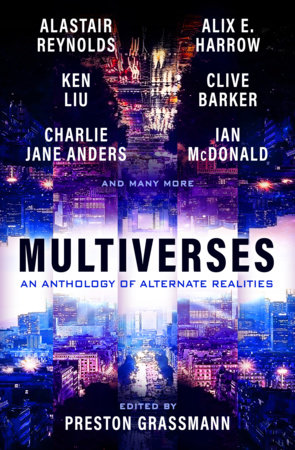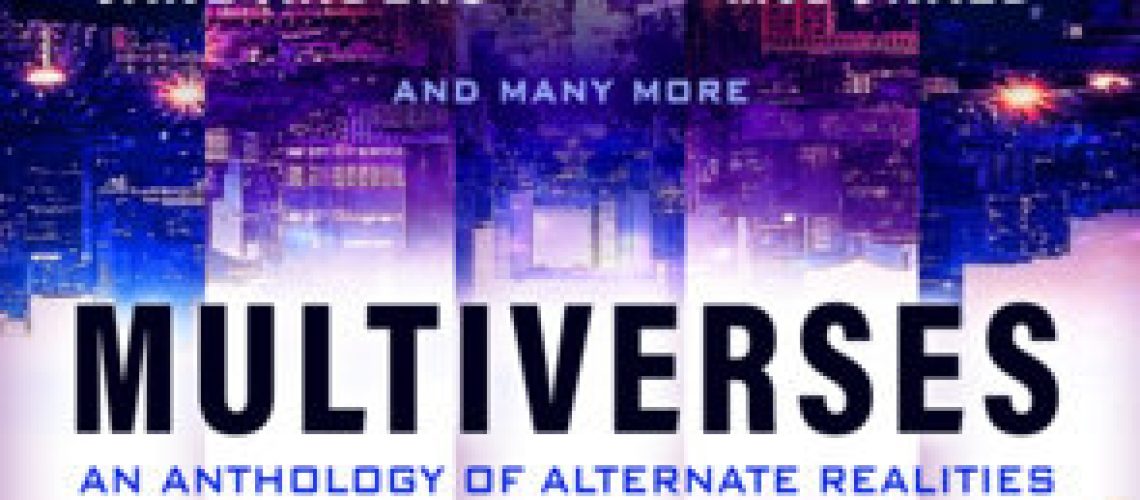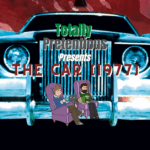Multiverses: An anthology of alternate realities (edited by Preston Grassmann) is a new book that brings together a diverse set of authors to tell stories of multiverses.
If a multiverse is the sum of all possible universes, what is a collection of multiverses called? Is it like infinity, where larger and larger infinities are just called Infinity?1 In any event, a word for a collection of multiverses is needed to describe Grassmann’s new anthology.
From the introduction:
“If ever there was a time when we were in need of a multiverse, it’s here and now, when all the future worlds of the past have collapsed into some other timeline that some of us would rather escape from.”

I myself have been a fan and enthusiast, one might even say a connoisseur of multiversal fiction, since I got into a car with Prince Corwin and Prince Random and drove from Westchester all the way to Amber. There are a lot of fellow passengers in that car with me these days. And as witness, this anthology, a whole lot of eager new drivers of that car, too.2
The organization of the book takes a slicing approach, including various slants on the multiverse in a variety of themes that cross subgenres. Parallel Worlds. Alternative Histories. Fractured Realities. I am not sure in the end, given a subject of a multiverse, that this organization actually holds up. Multiversal stories can and do accomplish many different things. That is part of their power (as well as their weakness).
And that brings to me something that irked me in this book: The amount of multiversal material in the various stories varies wildly. Perhaps this is the fault of my expectations. For me, a multiverse story is a story that takes place and makes use of the multiverse. There are two worlds, at least, to a multiverse story, by definition. And preferably more than that. Some of the stories, however well written, do not meet my criterion of a multiverse story. Take Ken Liu’s story “A Brief History of the Trans-Pacific Tunnel” – this is a perfectly good and solid Ken Liu story, harkening back to the time when he wrote short stories by the cartload instead of epic fantasy doorstoppers by the cartload. But it takes place in one alternate world, makes no reference or connection to any others and is completely self-contained in its alternate history and nowhere else. I would argue, by my lights, it is NOT a multiverse story at all. It’s a really good alternate history (showing Liu’s short-story chops remain strong). But multiverse? No.3
Like any anthology, too, the reader is going to find for themself a variety of reactions to the various authors and their takes on what is almost by definition the widest subject imaginable. The tone of the book is what I want to discuss here. There is a certain comedy, sometimes mordant, sometimes poignant, to the whole idea of a multiverse and how one engages with it as a fictional device. This sort of makes sense, because one can go for the bleak and existential futility of a multiverse (the idea that your choices, your life just doesn’t matter because in the end alternate versions of yourselves have done everything and anything).4 But one can only go so far in that, and that really is a take that doesn’t load-bear a variety of stories.
But some stories lean into the idea of many versions of yourself, some of whom have done better, and some of whom are monsters. The lead story in the collection, “Banish” by Alastair Reynolds, explores how surgery and medical procedures might work in a cross-universal context, and what happens when the medical professionals find out the identity of the patient, the horrors of aiding someone in another world, whose version in your world was a monster. What is the ethically responsible thing? And does it matter that the version in the other world is not the monster he was in your world?
But there are stories that tug at your heartstrings, too. Alix E Harrow’s “A Witch’s Guide to Escape” does not seem at first to be a multiversal story at all. Instead it feels like a poignant story about the power of books and a library and the wonder and help that a librarian can bring to the needy, or needing, reader. But it does slowly reveal how it fits into the theme, as well.
There are outright funny stories, like Eugen Bacon’s “The Set”, which is the story that feels most like the popular movie “Everything Everywhere All at Once”, where our hero, Jabari, gets his wish that his life was more interesting – in a kaleidoscope multiversal mode. Be careful what you wish for; a writer may yet grant it to you.
One last bit I want to mention in this anthology is that it includes two bonus additions that I hope that more anthologies will be inclined to include, i.e. art pieces, and poetry. Both of these inserts are lovely breaks in the flow of stories and both provide a different sort of way to look at the multiverse than through the lens of a story. I have noticed this tendency in anthologies as of late, and I hope it becomes a standard practice. Sometimes one needs a breather, and art and poetry fit that bill nicely.
Overall, I was satisfied with the anthology. Given the moment that Multiversal stories and movies and novels are having (to the point of Oscar-winning films!), this volume with its multiple multiverses sits ably amongst them. It scratches the need for multiversal fiction in a collection of bite-sized formats.
- Before math experts @ me: I am aware of Aleph numbers and the like. ↩︎
- It should be noted that one of my few published stories. “Newton’s Method “(Tales of Eve, Fox Spirit Books), is indeed, a multiversal story. I have been a driver of this car, too. This probably surprises exactly no one. ↩︎
- The discerning reader might realize that Philip K Dick’s THE MAN IN THE HIGH CASTLE, billed as an alternate history novel, really is a Multiverse novel by my definition. And it definitely is, complete with brief multiversal travel. The TV show based on the book is totally Multiversal, even more so than the book. ↩︎
- c.f. “All the Myriad Ways” by Niven, where the discovery of Multiverse travel leads to societal problems. ↩︎







